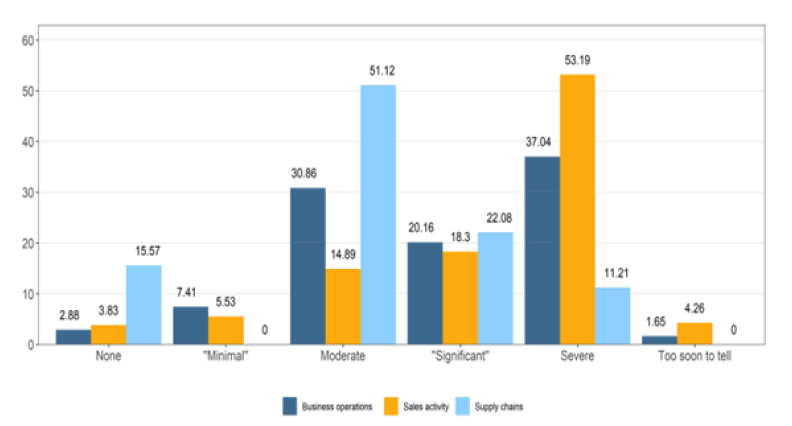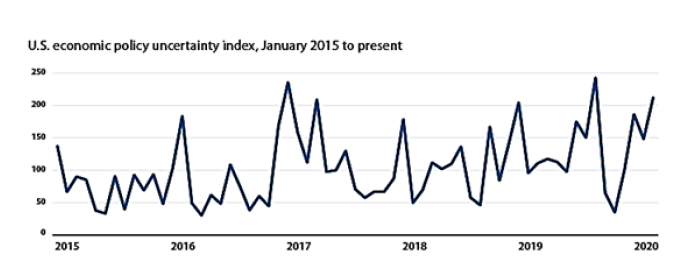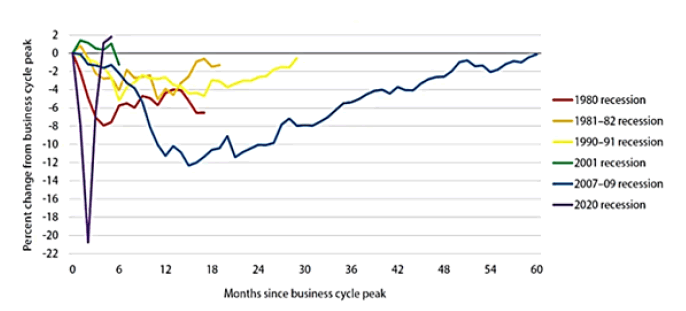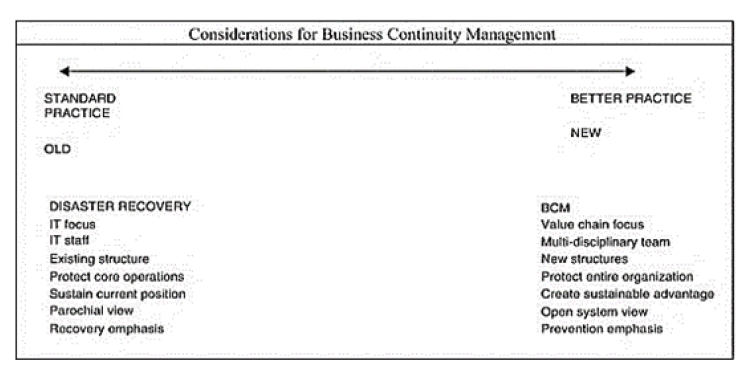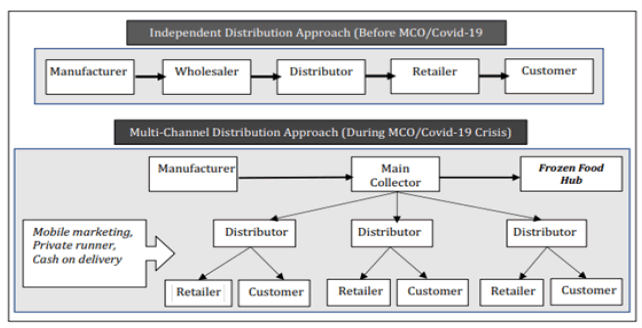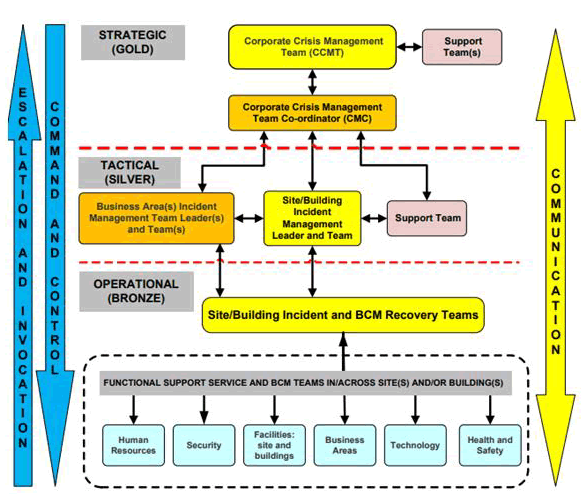Research Article: 2022 Vol: 25 Issue: 4S
Impact of strategic vigilance and crisis management on business continuity management
Amani Abu Rumman, Al-Ahliyya Amman University
Citation Information: Rumman, A.A. (2022). Impact of strategic vigilance and crisis management on business continuity management. Journal of Management Information and Decision Sciences, 25(S4), 1-15.
Keywords
Business Continuity Management, Crises Management, Strategic Vigilance, Supply Chain, COVID-19, Business Uncertainties
Abstract
By observing the extreme disruption in the business activities and strategic system, organizations are concerned about adopting risk management and contingency planning to minimize corporate uncertainties and deal with economic decline and supply chain disruptions. In this manner, the paper aims to shed light on the COVID situation and the impact of strategic vigilance and crisis management on business continuity management. The paper further elaborates on the responsiveness of organizations related to BCM activities. The research focuses on the two variables, strategic vigilance and crises-management, to impact the BCM effectiveness in the global pandemic situation. The findings illustrate that organizations consider prioritizing people with safety and strategic development, adopting innovation to manage disruptions, following government policies, and maintaining solid associations with stakeholders.
Introduction
Dynamics in the business environment affected the organizational performance if not managed appropriately. Ritter & Pedersen (2020) proposed that sudden events such as pandemic crises lead to negative consequences and uncertainties in managing operational effectiveness and efficiency. By observing the unpredicted effect of COVID-19 crises on business continuity, Fabeil, Pazim & Langgat (2020) magnified that enforced policies for social distancing and lockdown drastically affected economic and social activities worldwide and advance complications for businesses to manage their resources, including human and financial capital productively to gain benefits in the transforming condition. In the United States, many businesses temporarily closed their operations in response to restrictive policies, whereas many of them evolve their business structures, models, and strategies to maintain stability in the hostile work environment (Balla-Elliott et al., 2020). Henceforth, the global changes in business practices advance the significance of Business Continuity Planning (BCP) and crises management among organizations to perform responsively in the emerging crises and maintain profitable margins by being flexible with technological innovations and advanced strategies.
Margherita & HeikkilÄ (2021) also examined that Business Continuity Management (BCM) is the contingency strategy to take immediate steps in outbreaks and disasters to minimizing the destructive impact on business effectiveness. The excessive threat to public safety with the pandemic disease affected the business operations and stability due to the extensive reliance on the online system from consumers and businesses based on the restrictive distancing policies. In such crises, firms adopt BCM techniques to plan for urgency and facilitate business functions with program administration, third-party management, supply effectiveness, crisis management, and disaster recovery. Furthermore, modern organizations embrace innovative technologies and systems to limit adverse influences and enhance business resiliency (Papadopoulos, Baltas & Balta, 2020). By considering the US business market’s crises, the research identified the BCM effectiveness gap. Therefore, the study investigates the impact of strategic vigilance and crisis management on business continuity management during the COVID-19 pandemic.
Effect of Covid-19 Pandemic Crises on Business Performance
The novel virus outbreak severely affects individuals and organizations' healthy, social, and economic well-being. The study by Shen, et al., (2020) reflected that the COVID-19 crises adversely affected multiple sectors, including construction, energy, travel, fashion, and the overall consumer market, due to the excessive focus on safety and healthy consumption. The following discussion elaborated on the various effects of the pandemic rise of business outcomes.
Disruption in Business Process
The inclining rate of deaths and patients affiliated with corona affected the global economy and escalated consumer foods' demand. Other than that, COVID affected the micro and macro industry and drastically influenced the stock market, energy industry, and firms’ performance. The other study by Hagerty & Williams (2020) illustrated that the pandemic situation urges urgency in the business market for adopting evolved tools and innovation to maintain cash flow and momentum within the hostile situation because many businesses shut down their operations by being bankrupted, getting limited support from stakeholders and government restrictions.
Furthermore, the shifting business models in the pandemic crisis also affect business performance (Ritter & Pedersen, 2020). Therefore, limited opportunities to fund the business created an emergency in the business arena, affected the business margins in the long run with no profitability, and expanded operational cost. The escalated reach of COVID-19 in the US affected the business environment and structure with the mandated lockdowns and shuttered business. Henceforth, the disruption in the affected regions' financial activities dramatically creates demand and supply crises because firms faced issues in tackling their operational efficiency and effectiveness with suppliers' compressed resources and availability (Lodha & Kabra, 2020). With virus breakdown in the US region, the pandemic rise creates the economic shock in modern time and disrupts the organizational activities with advanced innovation and shuttered physical spots. With the declining economy and job loss, reducing consumers’ spending and supply chain changes urge firms to change their conventional business models to innovative ones for retaining the collapsed market position in the targeted regions. However, many organizations closed their operations due to severe losses in the corresponding period.
Additionally, COVID-19 immensely disrupts the supply chain processes that actively affect business continuity. According to Vinelli, Weller & Vijay (2020), shutting factories in China, the US, and European regions affects business mobility and employment ratio. Primarily, business managers observed the disruption in the supply chain due to a dramatic shift from the conventional supply chain to the online system (Cilloni et al., 2020). In this manner, the crises abruptly affected the business sectors in multiple dimensions. In respective concerns, American organizations are uneasy about investing in new projects or boosting sales because people are more prone to save future uncertainties.
Changing Economic Concerns and Business Expectations
With the keen observation of pandemic rise on business expectations and outcomes, the research indicated the decline in the stock performance and other macro factors such as inflations and limited funding. Moreover, American SMEs' operational and liquidity concerns were further affected by the virus outbreak (Alfaro et al., 2020). Dingel & Neiman (2020) also illustrated that extensive lockdowns created a vulnerable impact on the employment ratio, which flattened the United States' economic infrastructure (Brave, Butters & Kelley, 2019). In this manner, businesses faced consumer pattern changes, work practices, and socio-economic conditions in the US. By evaluating the severity of influence, the figure below magnified Covid impact on the business outcomes. The figure below illustrated that the COVID-19 condition affects the business performance and operational efficiency with the supply disruption and shock because of the increasing demand among consumers and lower prices for products (Meyer, Prescott & Sheng, 2021).
Further, workers paid less or received no money for their services, which reduced their demands for brands and affected the state’s economic activity with a significant decline in spending. Henceforth, consumption levels and economic decline are the two prime contributors to affect the overall business operations and create long-term consequences for business management to recover (Vinelli, Weller & Vijay, 2020). The economic uncertainty from 2015 to 2020 is illustrated below:
By comparing the US recession eras, pandemic crises affected the most business sales due to the external influences on the business process cycle. Bauer, et al., (2020) reported that Covid crises have a controversial impact on the business performance, as the track sales declined by 8.7% from February to March 2020 in the consumer industry due to restricted spending. In contrast, online sales, grocery sales, and pharmacy showed a spike rise because of changing focus from luxury to essential goods. On the other side, lifting restrictions on lockdown recover sales in goods industries by 17.7% from April to May; the months highest recorded sales. The change in sales spike is mentioned in the following figure 3:
Fabeil, Pazim & Langgat (2020) investigated that Covid-19 is a sudden threat to business effectiveness that enhances global firms' socio-economic crises. However, some take responsive measures to manage business continuity to sustain their reputation and profitability in the changing business infrastructure. On the other side, many limit their business by shutting factories and outlets in the international market to respond to pandemic losses. As a result, business continuity management is the substantial management process in the global crises to create value for businesses with limited resources and uncertainties.
Role of Bcm In Recovering Business During Covid Crises
In recent crises, organizations are more prone to adopt business continuity management measures to run business processes and deal with urgencies effectively. Fabeil, Pazim & Langgat (2020) investigated that the increasing demand for recovery and crisis management plans under the implication of BCM is indicated in the COVID crises to limit the exposure of adverse influences and human errors on organizational performance. Moreover, disruption in the supply chain is another considerable challenge for conventional firms, for which BCM encourages that management to adopt flexible and innovative systems to deal with corporate crises (Azadegan et al., 2020). In this manner, BCM plays a dynamic role in managing external attacks and discrepancies. The other research by Rezaei Soufi, Torabi & Sahebjamnia (2019) elaborated that crisis management and business continuity management work along to impact business risk management for sudden occurrences.
Business Continuity Management (BCM)
Transformations in the external business environment encourage businesses to minimize the affected threats with adequate planning and implementation. For this purpose, successful managing authorities highlighted the significance of Business Continuity Management (BCM). The research by Supriadi & Pheng (2018) elaborated that BCM is the act and process of mitigating critical incidents with responsive functions and processes to advance business performance with substantial planning. Developing contingent strategies for future urgencies is the prime goal of BCM to respond constructively towards the changing dynamics without interrupting the corporate activities (Kato & Charoenrat, 2018). Henceforth, BCM is the collective act of diverse organizational functions to eliminate uncertainties in operational management. According to Supriadi & Pheng (2018), BCM actively enhances business approachability towards macro and macro challenges. BCM process initially adopts a structured and comprehensive plan to mitigate the crisis, develop a cost-effective and efficient recovery plan for enabling a firm to deal with the emerging operational disruptions, and lessen the effect of business outcome uncertainties.
With evolving corporate trends and technology, the BCM process shifted from the technological to the strategic requirement for being more competitive in dealing with crises or disasters. Alharthi & Khalifa (2019) reflected that BCM strategy is significant for leading firms in ensuring safety for employees, work effectiveness, and maintain business reputation by preventing the adverse influences on business outputs. It further assures the quality of operations, governance, business strategies, decisions, tools, insurance, the legal system, and other regulatory concerns to maintain the brand image in vulnerable situations. For this purpose, BCM managers emphasize three versatile mindsets, including technology, value-based, and auditing. Supriadi & Pheng (2018) illustrated that the evolving practices of NCM advance the scope of the approach in minimizing the impact of a hostile environment on business performance. The figure below dominantly illustrates the change in BCM practice. The evolved process focuses on generating value with value-chain, multi-disciplinary team, protection, flexible structure, prevention tactics, and sustainable advantage.
By reviewing the COVID-19 crises globally, an organization actively adopted BCM approaches and its principles to reduce the pandemic's impact on business operations’ efficiency and efficacy. On the other side, BCM proves to be the most demanding strategy in the pandemic rise to dealing with a sudden risk to human life and businesses (Margherita & HeikkilÄ, 2021). Global leaders magnified the importance of BCM in dealing with COVID-19 impact by maintaining business reputation, inclining employees’ morale, organizational, operational consistency, meeting regulatory requirements, and creating solid associations with third party suppliers and customers.
Responsiveness of Businesses towards COVID-19 Crises
By reviewing the responsiveness of BCM, Sawalha (2020) highlighted that BCM performs in multiple dimensions and exceptionally lessens the risks with increased awareness and transforming corporate strategies to deal with emerging challenges with adaptive measures. The respective methodology performs exceptionally in multiple sectors, including service, insurance, banking, industrial, and manufacturing industries. With the focus on the significance of BCM in critical situations, Fabeil, Pazim & Langgat (2020) elaborated that about 75% of organizations failed to manage crises and uncertainties in the business environment without the active implication of business continuity planning. Therefore, COVID's rise urged firms to systematically implement BCM practices to evolve outdated strategies and adopt new tactics to lead change in the business environment. Consequently, business enterprises are concerned with reducing crises with prior planning and undertaking responsive business continuity steps to face future situations with prepared strategies.
According to Bourletidis & Triantafyllopoulos (2014), modern entrepreneurs emphasize BCM practices to improve business’s ability to survive in uncertain crises with marketing innovation, disruptive supply chain, improved corporate governance, and alternative strategies for each operation to advance performance efficiency and cost-effectiveness in a troublesome situation. The following figure magnificently explored the value of alternative strategies and BCM implementation to minimize the threat of COVID-19 crises on corporate competitiveness.
Entrepreneurs further proposed that business continuity strategies help the management recover the loss with meaningful frameworks and adaptive technologies to limit the threatening factors and influences in the COVID crises (Fabeil, Pazim & Langgat, 2020). Another research by Margherita & HeikkilÄ (2021) highlighted the example of various leading firms that work potentially in the COVID while expanding their business with the BCM planning and magnify the available market gaps, which are then shifted into the services and products for consumers to offer them extended value in the contact-less situation.
In the pandemic crisis, Amazon updated around 150 processes to meet the lockdown demands and invested millions in the new product lines and services such as household products, consumer products, medical supplies, and other demanding services with efficient delivery at the doorsteps. Besides online business expansion, Amazon focuses on backing the community with excessive donations for the bounce-back impact on the business reputation in COVID urgency (Caimi, Anderson & Hoppe, 2020). Likewise, many leading firms adopted similar tactics to add value to the community and business with online expansion. However, some business shut down their operations with no focus on business continuity planning and management. Huang, Chen & Nguyen (2020) assessed that the corresponding crises boost the focus on the BCM practices and planning in modern organizations, which further evolve their business strategies by advancing R&D budget, innovation, corporate responsibility practices, and differentiation tactics to enhance their survival in the uncertain crises such as pandemic and natural disasters.
Impact of Strategic Vigilance In BCM During Covid-19
From the understanding of BCM during Covid-19, the new organizations reflected that BCM practices produced results when applied effectively with the consideration on the disaster evaluation, business recovery, crises and incident management, urgency responsiveness, and contingency planning (Craven, Liu, Mysore & Wilson, 2020). In the United States, the Covid-19 crises dramatically affect revenue and corporate operational effectiveness, reducing their position and market competitiveness because of limited resources and no focus on strategic vigilance (Gressis, 2020). Therefore, strategic vigilance is vital for a business to implement business-continuity management in pandemic crises. Barry, et al., (2021) reported that the Covid crises affected business operations brutally and collapsed financial stability. Furthermore, shutting operations and social distancing policies affected the revenue margin and sales, for which the contemporary entrepreneurs highlighted that stabilizing the business image and processes meaningfully depends on strategic vigilance. By reflecting on the COVID situation, Adams & Walls (2020) elaborated that the successful organizations in the particular scenario focus on the risk management tactics, vigilance, activeness towards changes, and business continuity planning for mitigating the coming risks adequately.
According to Shalakah, Hleehal & Suliman (2019), strategic vigilance emphasizes managing the business strategies and tools to take responsive action in priority for the future threats and internal challenges. Henceforth, vigilance is the management tool to advance the organizational competency in dealing with the security concerns and positioning the corporation on the stability scale in the severe external conditions. Similarly, COVID-19 factors affected global businesses, but organizations with high vigilance perform extraordinarily in dealing with crises and maintain high profitability in the arena by considering contingency planning and crisis management to improve business continuity management. Henceforth, strategic vigilance is extensively associated with BCM because it enlarges its scope to deal with environmental issues remarkably with the available sources and tools (Wu et al., 2020). Minimizing business uncertainties, administrating business operations regularly, and taking corrective actions for the coming risk are the core concerns of the strategic vigilance and BCM.
In the recent urgency, innovative firms elaborated the importance of BCM practices and strategic vigilance to advance the outcomes and reduce the business financial status's inefficiencies. Day & Schoemaker (2019) report that integrating vigilance business operations activities is substantial to enhance business-continuity management and risk management. For this purpose, the organization actively uses modern tools, technologies to grow consistently, and leading towards minimal risk and advanced profitability. The technologies include e-procurement, e-payment, and website usage. By relating the modern tactics with the COVID situation, organizations massively shifted their business models to an innovative structure. They adopted creative tools such as e-payment and e-procurement to promote contact-less services to maintain the business revenue with gross sales on consumer products. Moreover, the website minimizes social contact and directly reaches the target audience with 24/7 delivery services (Gabriel & Loredana, 2020). In this manner, strategic vigilance is worthy of impacting positively on the BCM during the pandemic rise.
By investigating the influence of strategic vigilance on BM effectiveness in the COVID situation, the research by Niemimaa, Järveläinen, Heikkilä & Heikkilä (2019) explored that BCM is the responsive and adequate measures towards the sudden risks and crises, in which managers assign responsibilities accurately, maintain effective communication, educate employees and being more secure and attentive towards the external complications. In the dangerous circumstances, management faced a severe issue with reducing operational crises because of supply chain disruption and excessive demand and supply shortage. With this focus, those organizations played well that are working on Business Continuity Planning (BCP) and strategic vigilance. Suresh, Sanders & Braunscheidel (2020) further supported the claim that firms with immense awareness, contingency planning, and vigilance perform well with the BCP to adopt the business environment's disruptions and perform responsively mediate the environmental risks.
The association between strategic vigilance with BCM produced prolific outputs in the affected supply chain crises during a pandemic. Blos, Hoeflich & Miyagi (2015) elaborated that BCP and vigilance together lead towards worthy results. Correspondingly, the developed firms applied the concept of BCP to supply chain management planning in six crucial steps to improve their supply chain effectiveness with advanced innovation. The steps include risk mitigation, impact analysis, and supply-chain continuity strategy with high vigilance, plan development, testing, and maintenance. With all steps, organizations updated their customer experience, flexibility, innovation, efficiency, inventory management, financial condition, revenue growth, quality of products and services, market positioning, ordering cycle, and tome to deliver products at the doorsteps. With this potential, strategic vigilance has a significant influence on creating productive outcomes for BCM in the Covid crises by modifying the business operations and communication based on the emerging demands and changes in the external environment.
Impact of Crises Management Business on BCM During Covid-19
Modern businesses face severe destructions from the uncertain pandemic crises and temporary shutting of operations due to contactless processes limiting the viral expansion. In the United States, business entities admire the value of crisis management and BCM due to their influence on managing the risk and maintaining operational efficiency continuity. Therefore, BCM and the crises-management world simultaneously attain beneficial outcomes. However, SMEs indicated that COVID crises are still unknown because of their long-term effects on the business efficacy and position globally. Therefore, contingency planning to resolve the immediate risk and future threats would back the firms in dealing with a pandemic (Widmer, 2020). Handfield, Graham & Burns (2020) magnified that supply-chain disruption, transport restrictions, workers' health concerns, remote working, changing consumer preferences, and global economic decline are the transforming factors in the modern industry that destructively affect the prior strategies and business structure.
Accordingly, those changes demand organizations to shift their focus from the traditional strategies to the updated technologies and flexible infrastructure to boost economic stability and business effectiveness in the critical scenario. Therefore, business leaders consciously focus on risk management tactics to advance their preparedness for future crises and develop a realistic solution to handle the situation aggressively (Gudi & Tiwari, 2020). Pilorget (2020) highlighted the significance of BCM and crisis management to manage the rising business culture conflicts and strategic changes. Hence, both management tools are linked to minimize the impact of sudden incidents and shape business strategies to respond accordingly. Crises management is one-step for BCM to identify and resolve the adverse influences, then move towards continual improvement in the work process. Likewise, BCM relates the planning with emerging management to respond efficiently towards the immediate transition incorporate activities and environment. Therefore, the strong association between crisis management and BCM can disintegrate the destructive impact of economic changes, disruptive supply chains, and advanced innovation.
With creative ideas to resolve the business complications, BCM and crises management advances the scope for business by recognizing the technical and social complexity within the targeted market, enhance human responsiveness to resolve interruptions, build resilience to manage changes in the business, and reduce the failure with BCM and crises management (Koronis & Ponis, 2018). The other study Spiers (2018), identified that business continuity planning involves the four-step model, in which crisis management played the dominant role in reducing the unfavorable circumstances for business and regulating the business operations in the next step. The steps involved the crises-management, emergency management, contingency planning, and disaster recovery. Similarly, leading firms actively adopt this procedure to limit the side effects of the Covid cries on business performance.
In the pandemic situation, businesses faced threaten conditions from the economic disturbance, affected governance, reduced revenue margins, and declining demand from customers. Those challenges affect multiple businesses, but effective crises-management in the initial stages supports the firm to maintain continual operations with low cost and higher efficiency (Smith, 2012). The figure below critically explains the impact of crisis management on the BCM in the COVID situation.
The figure above evaluated managing the business crises to regulate human resource, security, resource management, business strategy, technology, and health and safety functions to produce beneficial outcomes. The process involves multiple processes, whereas crisis management is the initial step to minimize the threatening situation and respond to the growing suspicions (Smith, 2012). The other research by Morakabati, Page & Fletcher (2017) mentioned that stakeholder' responsiveness further acts as the vital influence on declining errors in the internal and external processes. In this manner, it determines that organizations need to focus extensively on crisis management and tools to advance BCM and BCP's performance in the Covid situation to extend their opportunities and limit externalities.
Responsive Actions and Strategic Recommendations Related To BCM Tactics
With the keen observation of the Covid situation, the disruptive business environment and adverse impact on the financial performance affect the business continuity and operational efficiency. By concerning the active BCP, Stephens, et al., (2020) reported that organizations should take an immediate course of action to modify work processes and business integration. In this scenario, leading firms advance their communication network with employees consider a vigilant strategy to reduce human and external uncertainties. Analyzing the responsiveness of BCM in the Covid crises, Hijjawi (2017) highlighted the significance of crucial strategies related to BCM to explore new opportunities and limit present threats from the global inconsistency. It further improves the business outcomes and economic stability within the corresponding state. The following are the key tactics organizations should follow in dealing with the pandemic rise and managing the business disruptions purposively by considering strategic vigilance, crisis management, and business continuity planning.
Prioritizing People with Effective Communication
By observing the effects of Covid on human health and psychology, businesses should tackle immediate actions to improve their health conditions and safety at the workplace and encourage them to communicate their ideas and opinions to make the condition better. Basnayake, Mack & Tong (2020) reported embracing transparent policies and recurring business activities concerning the business structure and strategies' changing dynamics. Moreover, training for modern skills and managing disruptions with advanced tools are further impactful for business performance to run continual operations with prolific results. Other than that, organizations need to adopt the latest technologies, including big data and Artificial Intelligence (AI), to track individuals' performance during remote working to minimize human errors to amplify the business effectiveness for coping with external crises.
Strategic Planning to deal with Disruptions
Pandemic rise worldwide has a destructive impact on consumer demand, business operations, and corporate structure because it enhances the demand for innovative practices and contactless service, affecting the supply chain and financial practices. The boom in website and e-payment method is witnessed in the particular period, and excessive disruption urges firms to take rapid action to grasp the opportunities by filling the present gaps. Leaders should evaluate the crises and maintain the continual improvement with modified structure and strategies with a particular purpose. By implementing updated tools, the business should evaluate the business liquidity to expand its operations to position the firm in a stable financial position. On the other side, it executes modern innovations such as e-procurement extended the business scope to improve its reach globally with a low-cost direct distribution system (Herbane, 2019). Henceforth, alternatives of supply chain and marketing strategies are worthy of influencing the business arena's extreme situation.
Advance Relationship with Stakeholders
Maintaining a clear and transparent relationship with stakeholders is crucial to minimize the operational cost and enhance business credibility in the investor and consumer market. With the viral situation globally, investors restrict their payments that further limiting progressive business developments. Moreover, the government reduced their funding for growing business operations that further hit the corporate arena. In a particular scenario, the organization should evaluate the crises and respond immediately with improving associations and communication patterns to link with stakeholders, including employees, customers, shareholders, and governmental entities, to gain support from the authorities and improve the situation for a business to maximize its performance in the upsetting situation (Luki?, Jaganjac & Lazarevi?, 2020). Consequently, innovative crisis management and BCM plans will improve the results for the affected businesses.
Follow Governmental Policies and take Active Precautions
Companies in critical situations need to focus on government policies and organizational opportunities to enlarge the work operations and respond with the crises-management, contingency planning, and recovery. Adopting the latest technologies based on government considerations and support from other institutions will further add potential to the business is expanding its value in the uncertain scenario.
Conclusion
The research investigated the impact of strategic vigilance and crisis management on business continuity management during the COVID-19 pandemic by emphasizing the business arena's disruptions. From the keen evaluation, the study proposed that BCM techniques are worthy of planning for urgency and facilitating business functions with program administration, third-party management, supply effectiveness, crisis management, and disaster recovery, and modern organizations are impressively contributing towards the particular approach to limit business uncertainties. Undertaking the US case, the research magnified that COVID crises affected business margins in the long run and the operational cost that reduced the revenue. Further, disruption in the supply chain, changing consumer demand, the boom in innovation, government restrictions, transport limitations, and shutting facilities worldwide affected the business position. For managing those complications in the corporate region, BCM performs exceptionally in inclining employees’ morale, organizational, operational consistency, meeting regulatory requirements, and creating solid associations with third party suppliers and customers.
Additionally, the research evaluates the influence of strategic vigilance and crisis management on the COVID situation, focusing on the BCM activities. Henceforth, integrating vigilance business operations activities is substantial to enhance business-continuity management and risk management. On the other hand, crises-management identifies the circumstances in BCM’s initial stages and resolves the adverse influences, then moves towards continual improvement in the work process. Therefore, BCM is adaptive to minimize internal and external conspiracies and dealing with threatening conditions such as economic disturbance, affected governance, reduced revenue margins, declining demand from customers, crisis management work. With particular concerns, companies should take responsive action to reduce the impact by prioritizing people with safety and strategic development, adopting innovation to manage disruptions, following government policies, and maintaining solid associations with stakeholders.
References
Adams, J.G., & Walls, R.M. (2020). Supporting the health care workforce during the COVID-19 global epidemic. Jama, 323(15), 1439-1440.
Alfaro, L., Chari, A., Greenland, A.N., & Schott, P.K. (2020). Aggregate and firm-level stock returns during pandemics, in real time (No. w26950). National Bureau of Economic Research.
Alharthi, M.N.A.N., & Khalifa, G.S. (2019). Business continuity management and crisis leadership: An approach to re-engineer crisis performance within Abu Dhabi Governmental entities. International Journal on Emerging Technologies, 10, 32-40.
Azadegan, A., Syed, T.A., Blome, C., & Tajeddini, K. (2020). Supply chain involvement in business continuity management: effects on reputational and operational damage containment from supply chain disruptions. Supply Chain Management: An International Journal.
Balla-Elliott, D., Cullen, Z.B., Glaeser, E.L., Luca, M., & Stanton, C.T. (2020). Business reopening decisions and demand forecasts during the COVID-19 pandemic (No. w27362). National Bureau of Economic Research.
Barry, J.W., Campello, M., Graham, J.R., & Ma, Y. (2021). Corporate flexibility in a time of crisis.
Basnayake, H., Mack, C., & Tong, I. (2020). Illustration of a corona virus cell COVID-19 business continuity plan: Five ways to reshape.
Bauer, L., Broady, K., Edelberg, W., & O’Donnell, J. (2020). Ten facts about COVID-19 and the U.S. economy. Brookings.
Blos, M.F., Hoeflich, S.L., & Miyagi, P.E. (2015). A general supply chain continuity management framework. Procedia Computer Science, 55, 1160-1164.
Bourletidis, K., & Triantafyllopoulos, Y. (2014). SMEs survival in time of crisis: Strategies, tactics and commercial success stories. Procedia-Social and Behavioral Sciences, 148, 639-644.
Brave, S.A., Butters, R.A., & Kelley, D. (2019). A new” big data” index of US economic activity,”. Economic Perspectives, Federal Reserve Bank of Chicago, 43.
Caimi, G., Anderson, J., & Hoppe, F. (2020). Covid-19: Building a digital bridge to the new normal. Bain & Company.
Cilloni, L., Fu, H., Vesga, J.F., Dowdy, D., Pretorius, C., Ahmedov, S., ... & Arinaminpathy, N. (2020). The potential impact of the COVID-19 pandemic on the tuberculosis epidemic a modelling analysis. EClinicalMedicine, 28, 100603.
Craven, M., Liu, L., Mysore, M., & Wilson, M. (2020). COVID-19: Implications for business. McKinsey & Company, 1-8.
Day, G.S., & Schoemaker, P.J. (2019). See sooner, act faster: How vigilant leaders thrive in an era of digital turbulence. Mit Press.
Dingel, J.I., & Neiman, B. (2020). How many jobs can be done at home? Journal of Public Economics, 189, 104235.
Fabeil, N.F., Pazim, K.H., & Langgat, J. (2020). Survivability of Micro-enterprises during the Pandemic Crisis. Asian Journal of Entrepreneurship, 1(4), 144-152.
Fabeil, N.F., Pazim, K.H., & Langgat, J. (2020). The impact of Covid-19 pandemic crisis on micro-enterprises: Entrepreneurs’ perspective on business continuity and recovery strategy. Journal of Economics and Business, 3(2).
Gabriel, D., & Loredana, D. (2020). Using internet as a solution for sales in Covid-19 pandemic: E-Commerce. Annals of DAAAM & Proceedings, 7(1).
Gressis, R. (2020). Strategic discourse in the time of the coronavirus. The Twenty-First Century and Its Discontents: How Changing Discourse Norms Are Changing Culture, 263.
Gudi, S.K., & Tiwari, K.K. (2020). Preparedness and lessons learned from the novel coronavirus disease. The international journal of occupational and environmental medicine, 11(2), 108.
Hagerty, S.L., & Williams, L.M. (2020). The impact of COVID-19 on mental health: The interactive roles of brain biotypes and human connection. Brain, Behavior, & Immunity-Health, 100078.
Handfield, R.B., Graham, G., & Burns, L. (2020). Corona virus, tariffs, trade wars and supply chain evolutionary design. International Journal of Operations & Production Management.
Herbane, B. (2019). Rethinking organizational resilience and strategic renewal in SMEs. Entrepreneurship & Regional Development, 31(5-6), 476-495.
Hijjawi, G.S. (2017). Impact of strategic agility on Business Continuity Management (BCM): The moderating role of entrepreneurial alertness: An applied study in Jordanian insurance companies.
Huang, W., Chen, S., & Nguyen, L.T. (2020). Corporate social responsibility and organizational resilience to COVID-19 crisis: An empirical study of Chinese firms. Sustainability, 12(21), 8970.
Kato, M., & Charoenrat, T. (2018). Business continuity management of small and medium sized enterprises: Evidence from Thailand. International journal of disaster risk reduction, 27, 577-587.
Koronis, E., & Ponis, S. (2018). A strategic approach to crisis management and organizational resilience. Journal of Business Strategy, 39(1), 32-42.
Lodha, R., & Kabra, S.K. (2020). COVID-19: How to prepare for the pandemic? The Indian Journal of Pediatrics, 87(6), 405-408.
Luki?, J., Jaganjac, J., & Lazarevi?, S. (2020). The successfulness of crisis management teams' response to the crisis caused by the COVID-19 pandemic. Economics of Enterprise, 68(7-8), 545-556.
Margherita, A., & HeikkilÄ, M. (2021). Business continuity in the COVID-19 emergency: A framework of actions undertaken by world-leading companies. Business Horizons.
Meyer, B.H., Prescott, B., & Sheng, X.S. (2021). The impact of the COVID-19 pandemic on business expectations. International Journal of Forecasting.
Morakabati, Y., Page, S.J., & Fletcher, J. (2017). Emergency management and tourism stakeholder responses to crises: A global survey. Journal of Travel Research, 56(3), 299-316.
Niemimaa, M., Järveläinen, J., Heikkilä, M., & Heikkilä, J. (2019). Business continuity of business models: Evaluating the resilience of business models for contingencies. International Journal of Information Management, 49, 208-216.
Papadopoulos, T., Baltas, K.N., & Balta, M.E. (2020). The use of digital technologies by small and medium enterprises during COVID-19: Implications for theory and practice. International Journal of Information Management, 55, 102192.
Pilorget, L. (2020). IT risk, continuity and crisis management.
Rezaei, S.H., Torabi, S.A., & Sahebjamnia, N. (2019). Developing a novel quantitative framework for business continuity planning. International Journal of Production Research, 57(3), 779-800.
Ritter, T., & Pedersen, C.L. (2020). Analyzing the impact of the coronavirus crisis on business models. Industrial Marketing Management, 88, 214-224.
Sawalha, I.H. (2020). Business continuity management: Use and approach’s effectiveness. Continuity & Resilience Review.
Shalakah, T.K., Hleehal, M.S., & Suliman, A.A.A.A. (2019). Strategic vigilance and its impact on the organization's vital capacities. Analytical Descriptive Study in UR Company for Engineering Industries/Dhi-Qar. Al Kut Journal of Economic and Administrative Sciences, 11(33), 128-143.
Shen, H., Fu, M., Pan, H., Yu, Z., & Chen, Y. (2020). The impact of the COVID-19 pandemic on firm performance. Emerging Markets Finance and Trade, 56(10), 2213-2230.
Smith, D. (2012). Organisation resilience: Business continuity, incident and corporate crisis management. Institute of Business Continuity Management.
Spiers, L. (2018). Corporate governance and its contribution to risk and crisis management in small companies (Doctoral dissertation, Bournemouth University).
Stephens, K.K., Jahn, J.L., Fox, S., Charoensap-Kelly, P., Mitra, R., Sutton, J., ... & Meisenbach, R.J. (2020). Collective sense making around COVID-19: Experiences, concerns, and agendas for our rapidly changing organizational lives. Management Communication Quarterly, 34(3), 426-457.
Supriadi, L.S.R., & Pheng, L.S. (2018). Business Continuity Management (BCM). In Business Continuity Management in Construction, 41-73. Springer, Singapore.
Supriadi, L.S.R., & Pheng, L.S. (2018). Business continuity management in construction. Springer Singapore.
Suresh, N.C., Sanders, G.L., & Braunscheidel, M.J. (2020). Business continuity management for supply chains facing catastrophic events. IEEE Engineering Management Review, 48(3), 129-138.
Vinelli, A., Weller, C., & Vijay, D. (2020). The economic impact of coronavirus in the U.S. and possible economic policy responses - Center for American progress. Center for American Progress.
Widmer, F. (2020). Covid-19: Crisis management & resilience planning. Deloitte Switzerland.
Wu, L.K., Su, W.H., Hsiao, S.H., & Hou, M.F. (2020). Preparedness for the next emerging infectious disease outbreak by implementing strategic human resource management. Journal of the Chinese Medical Association, 83(10), 973.
Received: 20-Dec-2021, Manuscript No. JMIDS-21-10572; Editor assigned: 22-Dec-2021, PreQC No. JMIDS-21-10572(PQ); Reviewed: 02-Jan-2022, QC No. JMIDS-21-10572; Revised: 12-Jan-2022, Manuscript No. JMIDS-21-10572(R); Published: 20-Jan-2022
